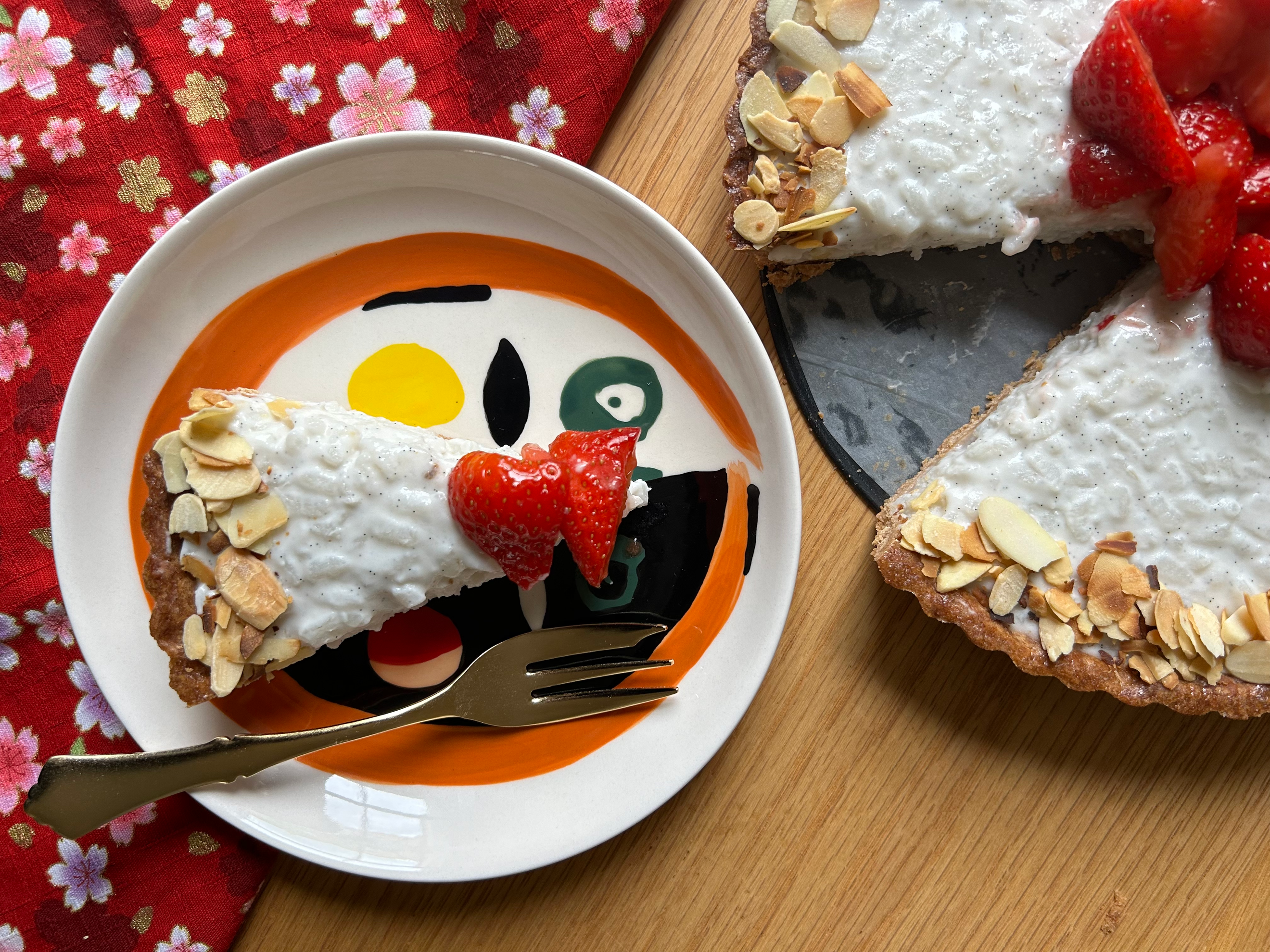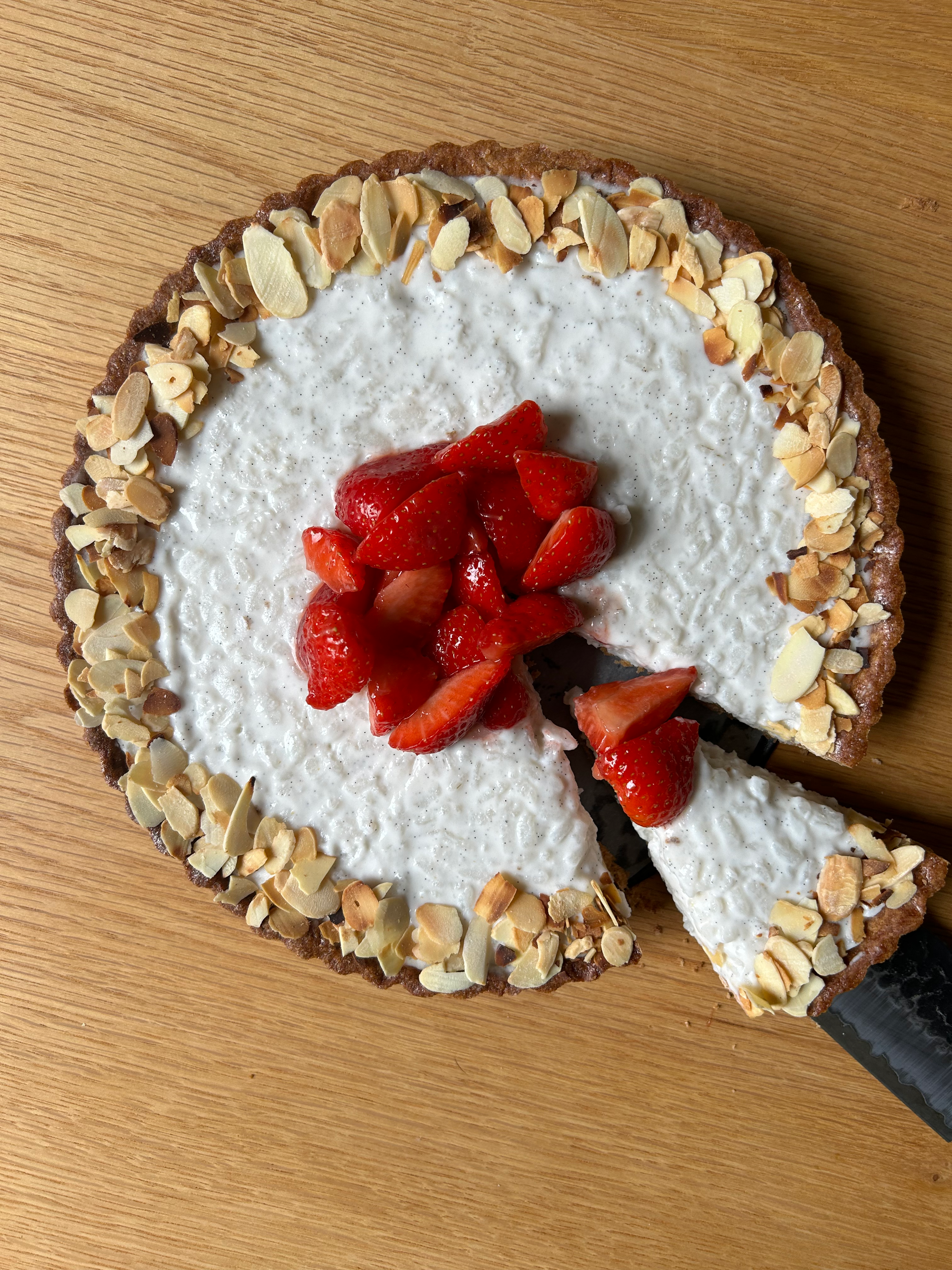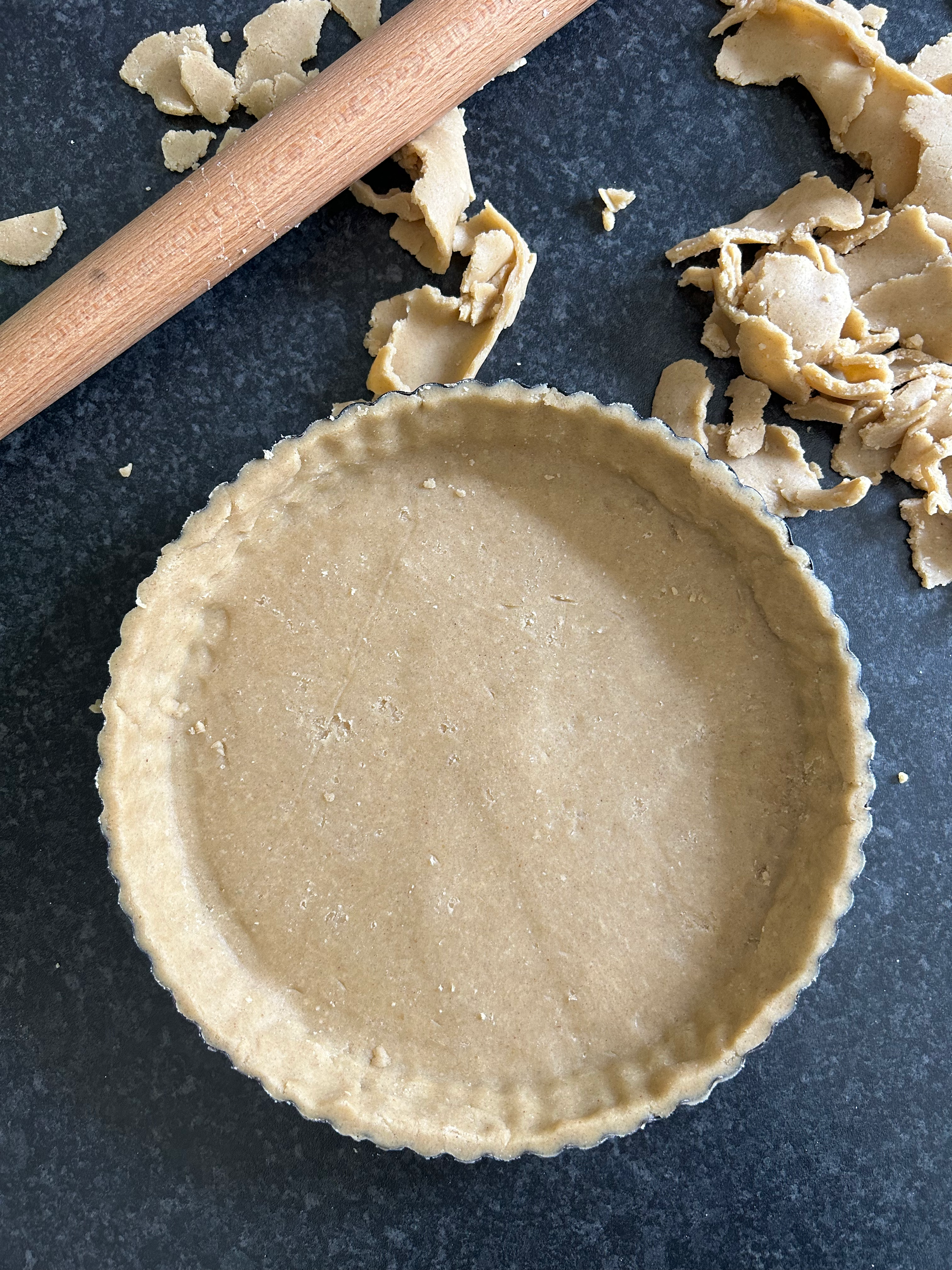
A Love Letter to Tarts, Then and Now
Featuring a rice pudding tart with macerated strawberries and toasted almonds.
Some things change, some things stay the same.
Tarts are what I return to time and time again. Every time I make them, it feels like that scene in Hercules there the planets align and draw a line between the past the present. Tarts bring to my past and calm my present. They are an oasis, a confidence booster, a brag all in one. Their significance for me will never change.
But tarts themselves have changed. I've been making tarts for seventeen years now and I've seen their evolution. In the early 2000s, tarts were simple but luxurious, to made by the professionals only. Restaurants (including several that I worked at) piled them with glossy dark chocolate and built crusts sturdy enough to hold it up. They rarely bothered with toppings and preferred a shallow height so that you could just as easily eat them with a fork as with your hands.
In the 2010s, tarts reached the home kitchen. We made crusts out of Oreo cookies and graham crackers and bought fluted tart tins and reveled that we knew what the word "fluted" meant. The lines between tarts and pies blurred as everything became fluted and flaky. There was so much frangipane.

Today, tarts are luxurious again but they are also stressfully delicate. Crusts are so thin that they mimic croissant layers, shattering upon impact with a fork or your teeth (and annoying as hell to roll out at home. I am convinced restaurants are using a sheeter because otherwise HOW SWAY?). Custards are the consistency of silk. Savory fillings abound but they are bougie like pate or quail eggs (I swear I saw a quail egg quiche tart at Harrod's the last time I was there). Tweezer microgeens are back and with them, the 90s.
Tarts also have layers now. They are taller and and therefore elegant in the way a 5'10" model is elegant—pretty and lanky and unattainable. My 2000s tart tins look painfully boomer. And some tarts are so damn tiny that you would never have guessed that tins came in sizes for ants (or amuse bouches). Tarts are growing up, one might say. So do I need to, too?
I've been watching pastry change for years now but truthfully, I am resistant to it. I wonder if I am becoming lost in a sea of tarts. If everyone is making them, is anyone making them? And although I like change (I say aloud, convincing nobody), when it comes to tarts I am a Luddite, missing the days of chocolate ganache and crusts so thick you'd swear they had a BBL.
But then I saw someone on the Internet put freakin' RICE PUDDING in a tart and I had to try it. And if I tried that, then I had to roll out a thin-ass crust to match. And then I had to understand who in this world figured out that putting rice pudding in a tart is delicious. I learned that this rice pudding tart, or budino di riso, originated in Tuscany in the 16th century when rice started to become a popular grain. That rice came via the Moors (remember all that Muslin architecture in Sevilla?) who came via North Africa and parts of the Persian empire who traded with India, where of course, rice was (and still is) extremely popular. Rice pudding itself originated from India and exists today as one of my favourite desserts, kheer. What to me was a new type of tart really isn't new at all. It's so wonderfully old and has just taken on a new look.
So here we are, a luxurious, delicate, sturdy, and simple tart, the best of all worlds. A thin crust made from spelt, a nutty grain that adds heft. Rice pudding made from the thickest of the thick—coconut cream. Bougie vanilla bean. Toasted almonds. Brown sugar macerated strawberries. And of course, the eternal fluted tart tin. Some things change, some things stay the same.

Recipes are for paid subscribers only! Click below if you're interested in a paid plan. Your subscription helps supports my work.